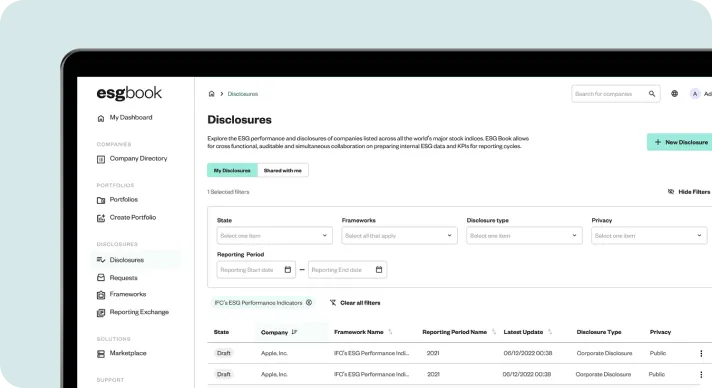Consultation Response by ESG Book on the proposal for revised guidelines on the supervisory review process

General Comment
ESG Book welcomes EIOPA’s forward-looking work in integrating climate change and sustainability risks into insurers’ risk management practices and supervisory review processes. The proposed guidelines for reviewing the integration of these risks into business models, investment strategies, governance systems, and the assessment of overall solvency needs within the Own Risk and Solvency Assessment (ORSA) are essential. While the recent monitoring exercise on the use of climate change scenarios in the ORSA confirmed that significant progress has been made in integrating climate change risks into ORSA by insurance undertakings, challenges in achieving consistency, data quality, and supervisory convergence persist across national jurisdictions.
To strengthen the review process, we recommend that EIOPA adopt a more structured approach to bridge these maturity gaps. The approach must acknowledge the diverse methods and stages of progress towards the incorporation of climate and sustainability risks across national jurisdictions. It must also be reflective of the evolving sustainability regulatory landscape in Europe. We recommend establishing a formal peer-learning platform for national competent authorities (NCAs) that would facilitate the transfer of knowledge and best practices, accelerating supervisory convergence. This deliberate, iterative approach—building on existing tools like the Supervisory Handbook—will ensure the SRP remains effective and risk-based without imposing undue burden, ultimately enhancing the financial system's resilience to sustainability risks.
Consultation response to Guideline 47 – Climate change and other sustainability risks
ESG Book strongly supports the objective of the guideline to integrate climate change and other sustainability risks into the supervisory review process, as these risks have a demonstrable financial impact across traditional risk categories of insurers, such as underwriting, market, and credit risk. The inclusion of the requirements to assess both physical and transition risks, and to verify that undertakings make reasonable efforts to evaluate these risks over short, medium, and long-term horizons, is a critical step towards ensuring the long-term resilience of the European insurance sector. This forward-looking, risk-based approach is consistent with the core principles of Solvency II and aligns with EIOPA's own observations from recent monitoring exercises, which show that insurers are making progress in integrating climate scenarios into their Own Risk and Solvency Assessment. By providing this guidance, EIOPA promotes supervisory convergence in a complex and evolving area, ultimately enhancing the consistency of supervisory engagements for undertakings.
However, to further the parallel objective of simplification and ensure effective implementation, EIOPA should explicitly state expectations for board-level competence in the guideline. This could involve encouraging supervisors to verify that undertakings' administrative boards include members with relevant sustainability expertise or have undergone mandatory training, ensuring effective oversight of these complex, strategic risks. Furthermore, the guideline should more strongly encourage supervisors to require quantitative climate scenario analysis, using established pathways like those from the NGFS, moving beyond qualitative assessments. This forward-looking quantification is critical to accurately assess potential impacts on solvency.
In conclusion, Guideline 47 is fundamentally sound and necessary; these suggestions will help ensure its application is both effective and efficient, fully aligning with the objectives of the Solvency II review.
Consultation Response to Guideline 45 – Governance in addressing emerging risks in the SRP
We support the introduction of Guideline 45 as an important element that would ensure supervisory authorities can proactively adapt to the rapidly evolving landscape. A regular, structured process to analyze legal developments and the risk landscape is crucial for maintaining an effective Supervisory Review Process (SRP). The rationale for this guideline is particularly strong for ESG risks, which are characterized by their long-term horizon, data evolution, and interconnectedness with traditional risk categories; a yearly review cycle ensures that national supervisory methodologies remain consistent with EU-level advancements promoting supervisory convergence and predictability for undertakings.
The Consultation Paper and the Guidelines can be accessed here.
Leverage ESG Book’s Disclosure Utility, comprehensive risk analytics, and the Reporting Exchange to manage emissions and climate risks and facilitate regulatory compliance to streamline reporting.



